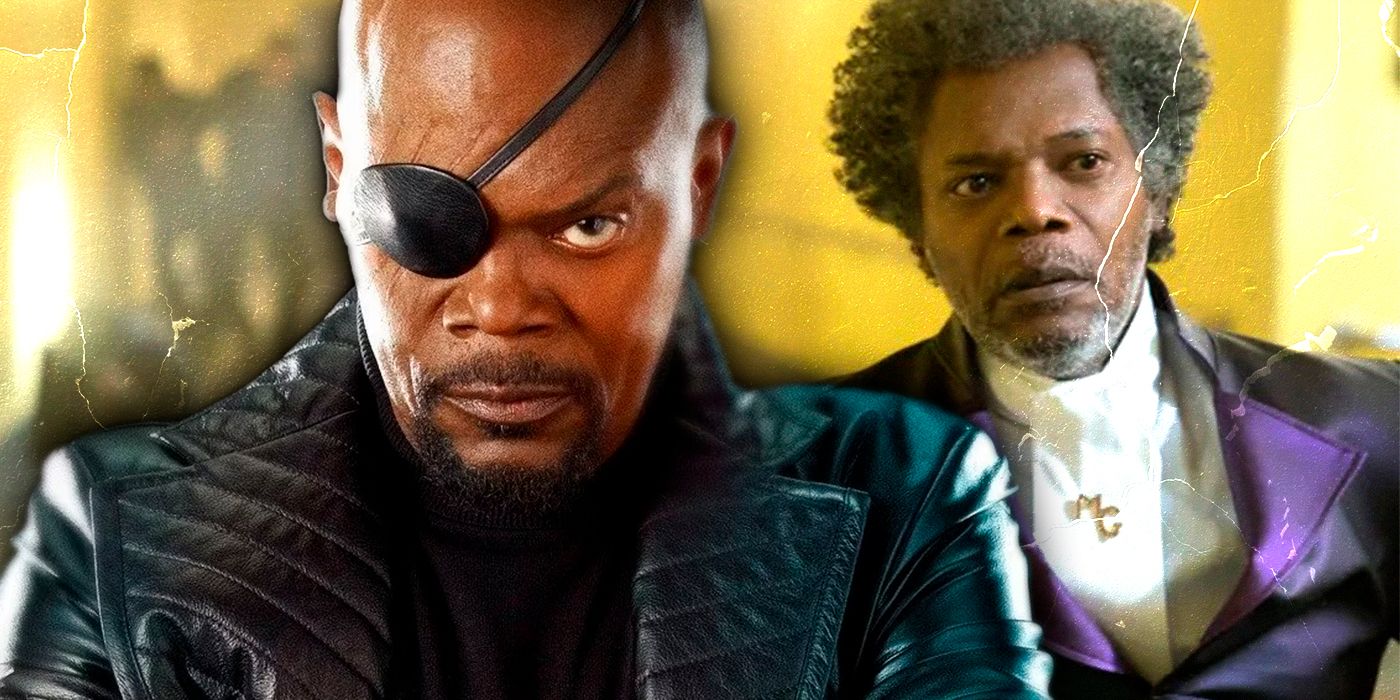Samuel L. Jackson is one of the best-known modern actors, and it's likely because of the sheer volume and variety of projects with which he is involved. He's part of some of the biggest franchises in popular culture, as well as more prestige films like his work with acclaimed writer and director Quentin Tarantino. And Jackson's still a major part of the Marvel Cinematic Universe because of his role as Nick Fury. He first played Fury in the end credits scene of Iron Man, which not only set high expectations for MCU end credit scenes but also launched the shared universe. That's not an insignificant role, but it does overshadow a potentially more interesting superhero role that Jackson had played previously -- Mr. Glass in Unbreakable.
Unbreakable is a quiet, character-driven superhero drama starring Bruce Willis as David Dunn, a man in a struggling marriage with a strained relationship with his son who discovers that he is, as the title explains, unbreakable. Along his journey, he meets Mr. Glass, who helps him uncover the truth of his power and understand his vulnerability to water. As David learns to understand and use his powers to help people, he is able to repair his marriage and build a relationship with his son. The film is quite unlike the flash and big-scale superhero movies of this modern era, but it has one of the best villains to date and helped popularize a mold for all villains to follow.
Why Unbreakable's Mr. Glass Is an Impressive Supervillain
Mr. Glass is not the character's real name. His name is Elijah Price, but he earned his nickname as a child thanks to his medical ailments that make his bones brittle and shatter easily. The film opens hauntingly on his birth when the mere process of being born is powerful enough to break his limbs. His medical problems isolate him from his peers and make it difficult to connect with people. Price's mother introduces him to the world of comic books as a way to bribe him to get out of the house, but that gift becomes a bridge to a new understanding of the world. Thanks to his intense study of comic books, he concludes that if there is someone as breakable as him, there must be someone equally unbreakable. And his attempt to find his counterweight leads him to a life of villainy.
Price orchestrates major disasters to weed out this unbreakable person, including derailing a train and blowing up a plane. He has killed thousands of people in pursuit of his theory, and that's just in the first film. He appears again in Glass, which brings to a climax the events of Unbreakable and its surprise sequel, Split. In this film, he manages to share with the world the existence of superpowered individuals despite the efforts of a secret organization whose only purpose is to prevent this exact thing. His intelligence sets him apart, and he's willing to do whatever it takes to prove he's right. And considering his physical limitations and the numbers and skills of those working against him, it's no small feat that he ends up victorious.
How Mr. Glass Influenced Future Supervillains
Mr. Glass isn't just a great villain because he ultimately wins but also because of the precedent he sets for future superhero films. He is David Dunn's perfect foil, and while the concept of the villain being an exact inversion of the hero comes from comics, Unbreakable brought that into modern superhero films. When Batman squared off Michael Keaton's Caped Crusader against Jack Nicholson's Joker, there was a sense of contrast. But it wasn't until The Dark Knight that the live-action film adaptations of these characters explicitly talked about how they complete each other and are inversions of one another. That is the exact template set out by Mr. Glass, so while he didn't invent the concept, he certainly helped give a grander context and significance to the phenomenon.
Even the MCU relies heavily on the template he set for supervillains. The antagonist in Ant-Man is Yellowjacket, a villainous version of the titular hero. The Incredible Hulk also has the Abomination, while Captain America: The First Avenger has Red Skull. Sure, these are all based on comics, but these heroes have a range of villains that could've been included in the films instead. However, there is something fascinating about exploring the line between being a hero and a villain, and its effectiveness can be traced back to Mr. Glass and David Dunn in Unbreakable.
Mr. Glass is not only an impactful villain in his own film series, but he also helped to lay out a template for future superhero films in terms of the relationship between the hero and their villain. He explains the idea of villains being inversions of their heroes in a way that sets an expectation and furthers understanding of the premise that permeates the genre. While Nick Fury is a more notable character, Mr. Glass shouldn't be glossed over on Samuel L. Jackson's resume.


